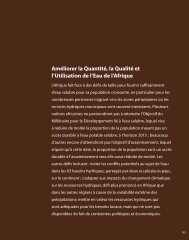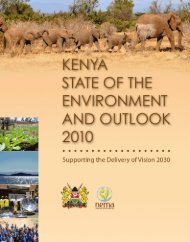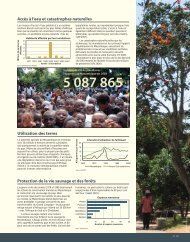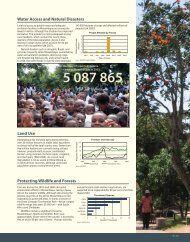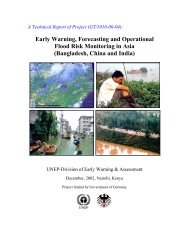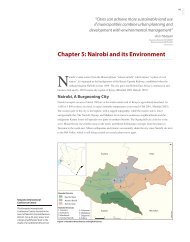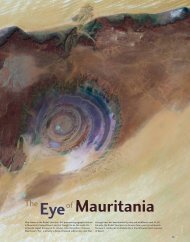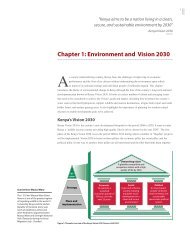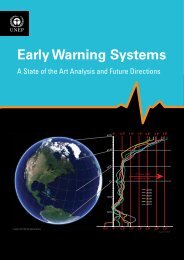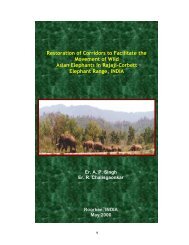Uganda Atlas of Our Changing Environment - GRID-Arendal
Uganda Atlas of Our Changing Environment - GRID-Arendal
Uganda Atlas of Our Changing Environment - GRID-Arendal
You also want an ePaper? Increase the reach of your titles
YUMPU automatically turns print PDFs into web optimized ePapers that Google loves.
Effects <strong>of</strong> the Northern By-pass during the rainy season (2007)<br />
Prior to the peak <strong>of</strong> urbanisation being experienced now,<br />
these two systems had a wide coverage <strong>of</strong> wetlands and<br />
around them a buffer <strong>of</strong> thick forests. Citizens in 1960s<br />
would use boats to cross over from Kamwokya along the<br />
stream through the present Centenary Park to Luzira.<br />
The streams even had a lot <strong>of</strong> water then.<br />
This has seen most <strong>of</strong> the water in these places drained<br />
and lowering the water tables temporailiry during the<br />
dry seasons.<br />
The shrinkage <strong>of</strong> Nsooba-Lubigi wetland system in the<br />
upper catchments due to settlements has increased the<br />
retention time <strong>of</strong> the water in the lower reaches during<br />
rains resulting into flooding. It should be noted that the<br />
gradient <strong>of</strong> this system is quite low making the water<br />
meander at a slow rate as it finds its level. This process<br />
has greatly increased on the wetland coverage downstream<br />
around the Kampala-Wakiso border and beyond.<br />
Areas <strong>of</strong> Namungoona have seen land that was dry being<br />
reclaimed by the wetland overtime.<br />
There has been contionous shrinkage <strong>of</strong> the Nakivubo<br />
wetland system. The gradient <strong>of</strong> this drainage system is<br />
a bit steeper than that <strong>of</strong> Nsooba-Lubigi wetland system<br />
and so water in this system has less time to reticulate<br />
and claim some areas. The situation was worsened by<br />
the widening <strong>of</strong> Nakivubo Channel which saw a lot <strong>of</strong><br />
NEMA 2007<br />
Flooding in Bwaise, a Kampala surbub after a heavy down pour (2008)<br />
water being drained from these areas. This has greatly<br />
lowered the water table in these areas leading to further<br />
encroachment <strong>of</strong> the remaing strectches for agriculture.<br />
Water Quality<br />
In the 1960s Kampala had clear water in the streams and<br />
good drinking water in the natural springs.<br />
Overtime, the city has had the water quality<br />
deteriorating due to:<br />
• Contamination <strong>of</strong> water from pit latrines and<br />
poorly constructed ‘hanging’ latrines that<br />
are opened into the channels during rains<br />
• Frequent flooding that ends up draining the pit<br />
latrines directly into the water tables<br />
Currently, more than 85% <strong>of</strong> the spring wells in Kampala<br />
are polluted with E-coli- a sign <strong>of</strong> faecal contamination.<br />
• Industries that have been constructed close to<br />
water ways, releasing their effluents into the<br />
water.<br />
• The silt which is being eroded from the opened<br />
up areas and during the rains is swept down into<br />
the water sources. Overtime, Lake Victoria has<br />
become more turbid and this has a negative<br />
impact on the fish industry since it leads<br />
to silting up <strong>of</strong> the breeding grounds for fish.<br />
127<br />
NEMA 2008



